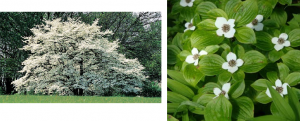Adventures with Wildlife
It’s November again and I am Nanowrimoing my little heart out, so I’ll be reposting a few things from way back when, and concentrating on the new novel climbing out of my head.
One of the privileges of living in Alaska is the numerous furry and feathered creatures which populate the Great Land. Also the weather, which is grand. Due to the summer heat (yes, heat. like 80 F.) we’ve been leaving the door to the deck open. This allows the dogs, breezes, hornets and mosquitoes to freely move in and out, though we’d rather somethings stayed more out.
This afternoon the cat and I decided the best way to putter through a Sunday afternoon was to take a nap. I dozed off and was later woken by noises from the living room — barking dogs and a squirrel screaming bloody murder. I sprang from my bed to see what was the matter, away down the hall I flew like a flash, and there are the two dogs sniffing at the corner of the window sill, and there is a little squirrel clinging to the molding and Christmas lights above the window, no doubt deeply regretting the decision to step in our door.
I could see but one course of action. “Mom!!” I yelled. “Get a net!”
She came upstairs and agreed we needed to get the poor beastie outside. “He probably has rabies,” I said uncharitably.
“Honey,” she said, looking me straight in the eye, “I went to ag school. He does not have rabies. Small furry morsels do not get rabies because if something with rabies bites them, it eats them.”
“Well,” I said, “I’m sure he has other diseases.”
“He probably has fleas,” she told me matter-of-factly, and went to go get the dipnet.
The dogs quickly lost interest in the window sill; the squirrel had stopped making noise and they couldn’t fathom where it had gone.
They went out on the deck to look for it.
Back came my mother. “Maybe we should get a towel or something,” I’d decided. “He’s going to fall off.” The mesh of the dipnet could easily fit two or three squirrels per hole. (Salmon are generally much bigger than squirrels. No, really.)
My mother, however, put the edge of the dipnet up to the squirrel and prodded him gently. He had by then decided that this was the worst day of his tiny little life, and nothing worse could happen. He transferred easily from clinging to the top of the window to clinging to the rim of the dipnet.
“Wait! Let me get a camera!” I got a few digital pictures once she had him out on the deck. The dogs suddenly realized where he was and became very interested in what my mother was going to do with him. She took him to the edge of the deck by the wood and lowered him down so he could get on the railing.
That little squirrel scrabbled on the railing for half a second, leapt, sort of glanced off one tree and shot up another, chattering for all he was worth. The dogs waited for him to come back for a long time, but I’m sure he went straight home, or to the bar, wherever he could get a stiff drink quicker!







